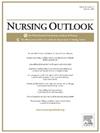Comparing the influence of social risk factors on machine learning model performance across racial and ethnic groups in home healthcare
IF 3.7
2区 医学
Q1 NURSING
引用次数: 0
Abstract
This study examined the impact of social risk factors on machine learning model performance for predicting hospitalization and emergency department visits in home healthcare. Using retrospective data from one U.S. home healthcare agency, four models were developed with unstructured social information documented in clinical notes. Performance was compared with and without social factors. A subgroup analyses was conducted by race and ethnicity to assess for fairness. LightGBM performed best overall. Social factors had a modest effect, but findings highlight the feasibility of integrating unstructured social information into machine learning models and the importance of fairness evaluation in home healthcare.
比较社会风险因素对家庭医疗中不同种族和民族的机器学习模型性能的影响
本研究考察了社会风险因素对机器学习模型性能的影响,以预测家庭医疗保健中的住院和急诊就诊。利用一家美国家庭保健机构的回顾性数据,利用临床记录中记录的非结构化社会信息开发了四个模型。比较了有无社会因素的影响。根据种族和民族进行了亚组分析,以评估公平性。LightGBM总体表现最好。社会因素影响不大,但研究结果强调了将非结构化社会信息整合到机器学习模型中的可行性,以及家庭医疗保健公平性评估的重要性。
本文章由计算机程序翻译,如有差异,请以英文原文为准。
求助全文
约1分钟内获得全文
求助全文
来源期刊

Nursing Outlook
医学-护理
CiteScore
6.20
自引率
7.00%
发文量
109
审稿时长
25 days
期刊介绍:
Nursing Outlook, a bimonthly journal, provides innovative ideas for nursing leaders through peer-reviewed articles and timely reports. Each issue examines current issues and trends in nursing practice, education, and research, offering progressive solutions to the challenges facing the profession. Nursing Outlook is the official journal of the American Academy of Nursing and the Council for the Advancement of Nursing Science and supports their mission to serve the public and the nursing profession by advancing health policy and practice through the generation, synthesis, and dissemination of nursing knowledge. The journal is included in MEDLINE, CINAHL and the Journal Citation Reports published by Clarivate Analytics.
 求助内容:
求助内容: 应助结果提醒方式:
应助结果提醒方式:


